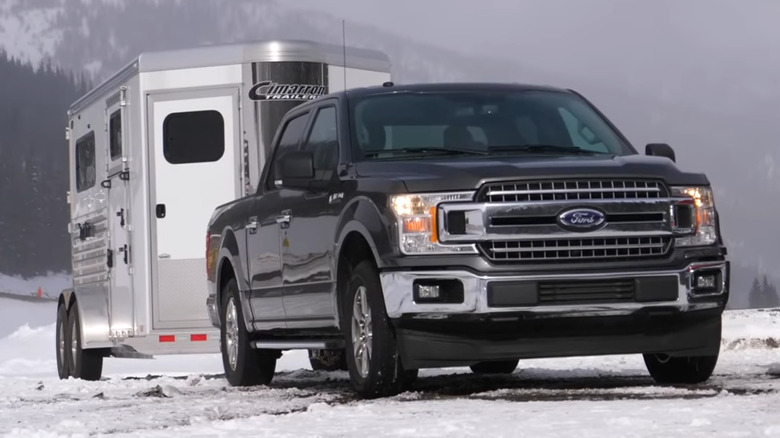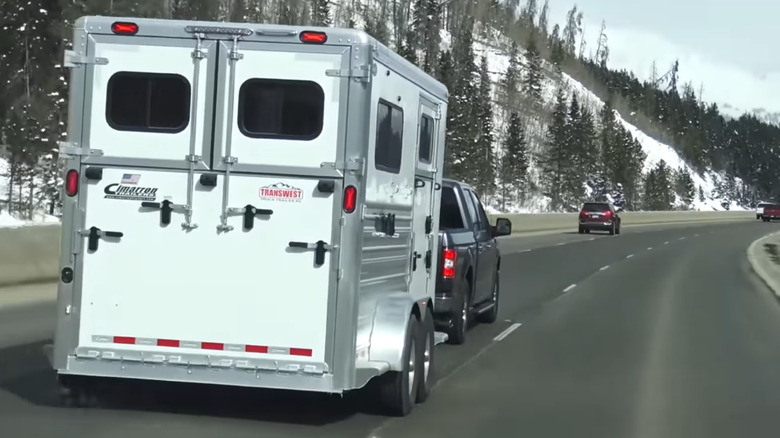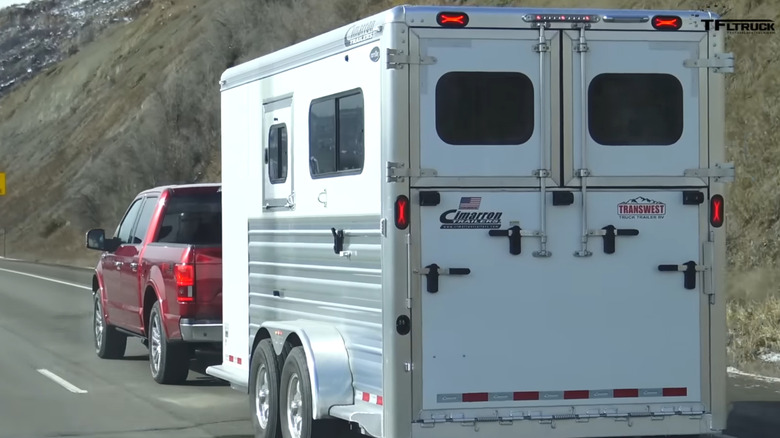What Is Ford's Trailer Sway Control And How Does It Make Towing Safer?
If you've ever towed a trailer, you know that keeping it steady is half the battle. Trailer sway is that sudden side-to-side motion — also called snaking, fishtailing, or oscillation — that can strike due to crosswinds, rough roads, or uneven weight distribution. Left unchecked, it can build fast, making your rig harder to control and potentially putting you in danger. Not too long ago, drivers with trailers depended on precautionary checks like the 80% rule and weight distribution hitches (WDH), which work to distribute the tongue weight of the trailer evenly across the tow car and trailer. While effective, it didn't offer much help once trailer sway started.
But that changed in 2009, when Ford introduced Trailer Sway Control in the Ford F-150 — a segment-first feature and game-changer in the world of trailer towing. Ford's Trailer Sway Control (TSC) is an advanced safety feature that uses onboard sensors to detect the onset of trailer sway. When stability is detected, TSC automatically reduces engine torque and applies braking individually on each wheel to bring the trailer back in line and keep the sway under control, stabilizing the vehicle-trailer setup. Trailer Sway Control is now standard on many vehicles from other brands like Ram and Toyota.
How does Trailer Sway Control work?
While it's important to make the right preparation before towing a trailer or camper, trailer sway can strike at any moment. It can be triggered by a host of things, including rough weather or rutted roadways. That's where Ford's Trailer Sway Control comes in. It is neither a precautionary feature nor a damage-control measure. It's an active response system that's designed to kick in the moment sway is detected. The Trailer Sway Control works alongside your truck's Electronic Stability Control (ESC) system.
According to Ford, TSC features sensors that measure yaw motion rate, steering angle, and lateral motion to determine if the trailer is swaying. Once sway is detected, the TSC system applies asymmetric braking and engine torque reduction (if needed) to help the truck and trailer back under control. Once the trailer is connected, the system activates automatically. If sway is detected while driving, a stability control warning will pop up with a "Trailer Sway Reduce Speed" notification on the display. This will prompt the driver to slow down while the system works to stabilize the car and trailer.
How Ford's Trailer Sway Control makes towing safer
If you have experience towing a trailer, you understand that sway is a big problem, especially on bad roads, during rough weather, or while crossing over a bridge. Without the Trailer Sway Control, trailer oscillation can escalate quickly, leading to loss of control, especially if the car is driving on highway speeds. The TSC feature works to correct minor sway early before it gets out of control and becomes dangerous.
The braking force applied to individual wheels as the TSC feature takes control helps stabilize the motion. Still, it is important to note that the trailer needs to be set up correctly for this feature to work well. Drivers need to ensure weight distribution is dialed in. For instance, make sure there's enough weight on the tongue and that the trailer is level. Ford's Trailer Sway Control is not a solution to sway; it is a safety feature. Therefore, it's critical that drivers take safety precautions while towing a trailer or camper. If you encounter strong enough winds that cause uncontrollable sway, slow down, or pull over until the conditions get back to manageable levels.


